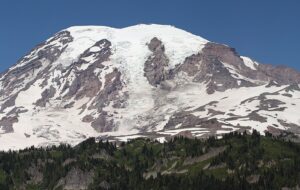Climate scientists have published a groundbreaking study on the degradation of glaciers in the Hindu Kush and the Himalaya, including Everest (8,849m). It revealed a rapid and accelerating melt-off at the top of the world.
Few studies exist about how rising global temperatures affect the world’s highest ranges. To bridge this gap, scientists went to the Nepalese side of Everest in spring 2019. They did in-depth studies of biology, geology, glaciology, and meteorology. They reported their findings this week in Nature Portfolio Journal Climate and Atmospheric Science.

Everest from the South Col glacier. Photo: Creative Common
Everest South Col glacier dwindling rapidly
The team installed Earth’s two highest weather stations on the South Col Glacier and pulled an ice core sample. They found that this glacier is losing ice 80 times faster than it took to build up. That amounts to a loss of 2,000 years’ worth of ice in just 25 years. The rate of degradation continues to increase. Currently, the glacier is shedding several decades of ice annually.
Among other things, the study concludes that the glaciers aren’t safe anywhere on the mountain. Strong winds at high, dry altitudes lead to more sublimation, though less melt-off. Increased humidity at lower altitudes lessens sublimation, but then melt increases in the warmer air.
“[This study] answers one of the big questions…whether the highest glaciers on the planet are impacted by human-sourced climate change,” said glaciologist Paul Mayewski. “The answer is a resounding yes, and very significantly since the late 1990s.”






